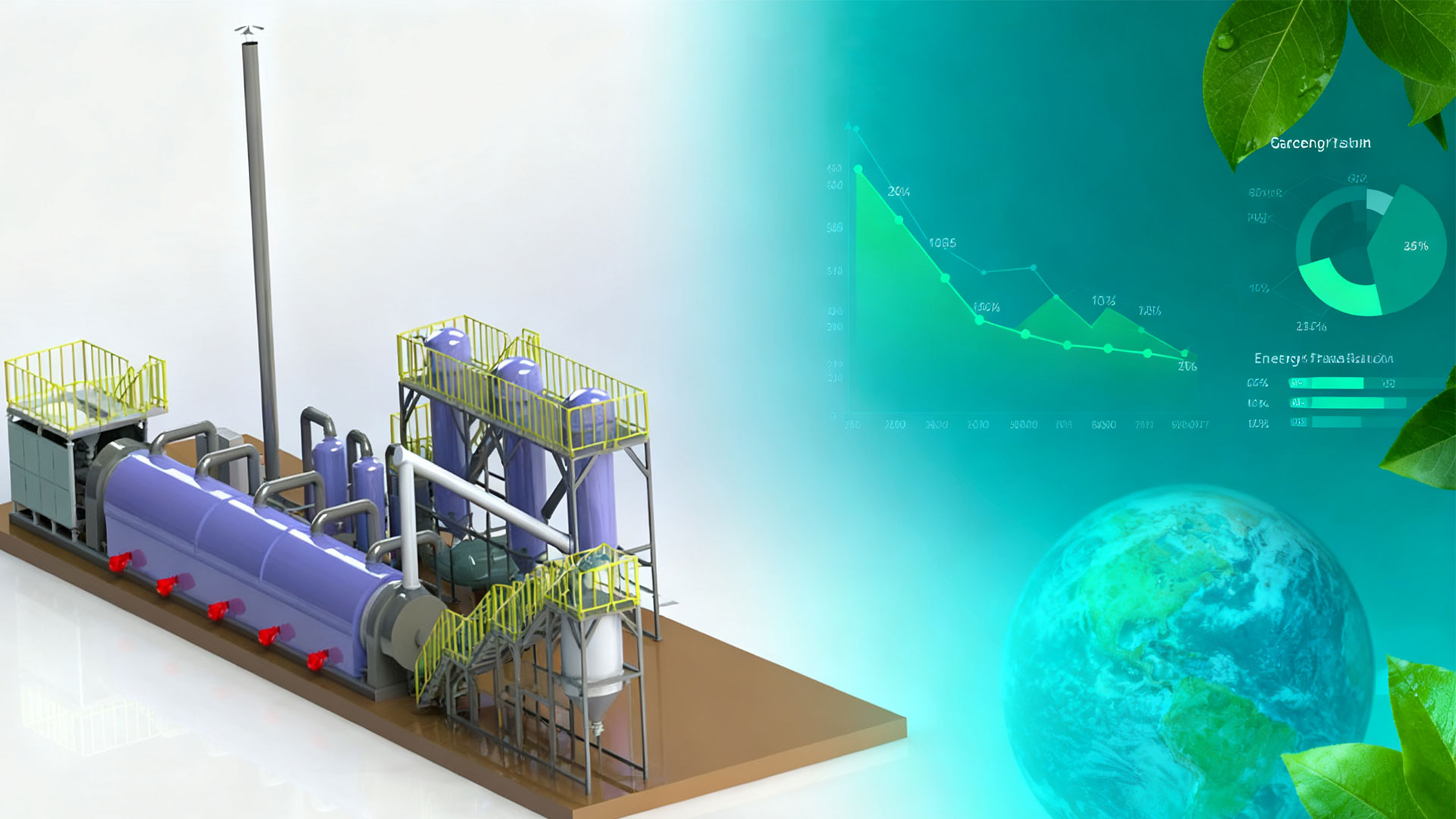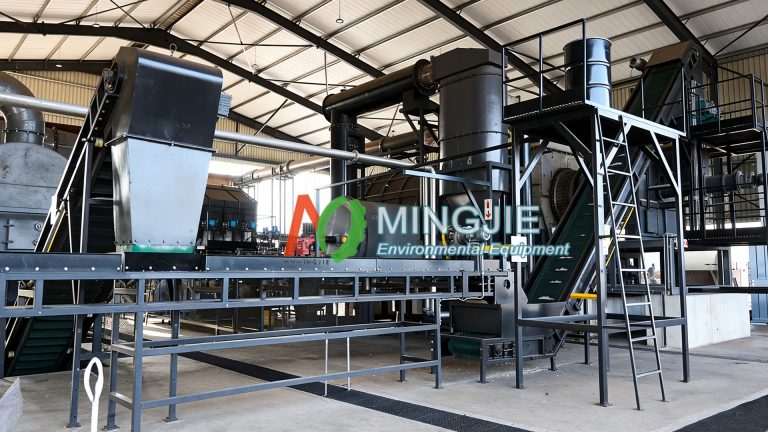Pyrolysis for solid waste treatment has shown great potential in reducing carbon footprint. Among various waste treatment solutions, pyrolysis technology is becoming an important pathway to reduce carbon footprint and achieve resource recycling.
Both landfilling and incineration of solid waste produce significant carbon footprints. Studies show that solid waste landfills are the third largest source of methane emissions in the United States. Waste incineration also presents a serious carbon footprint problem. Each tonne of municipal solid waste (MSW) incinerated typically releases 0.7 to 1.7 tons of CO₂.
To comprehensively assess the carbon footprint of solid waste treatment methods, both direct and indirect emissions must be considered. These include emissions from fuel combustion during treatment, emissions from purchased electricity and heat, and emissions from raw material procurement, transportation, and disposal.
For waste treatment technologies, a cradle-to-grave life-cycle assessment approach is particularly important. This approach comprehensively measures carbon emissions throughout the entire process, from raw material collection to final disposal.
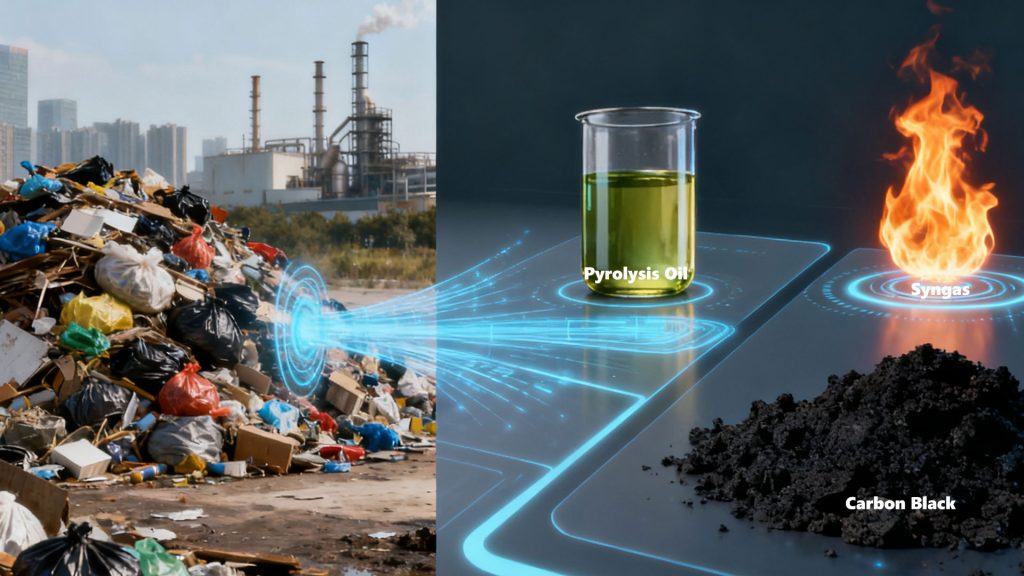
Carbon Reduction Logic of Pyrolysis for Solid Waste Treatment
Pyrolysis for Solid Waste Treatment refers to the process of heating solid waste to a certain temperature in an anaerobic or hypoxic environment. It can convert the organic components into pyrolysis gas, pyrolysis oil, and pyrolysis char. The core impact of pyrolysis technology on carbon footprint lies in reshaping the flow pathways of carbon in solid waste. It represents an upgrade from passive emission reduction to active carbon control.
Reducing Methane Emissions
Pyrolysis technology fundamentally reduces methane production through anaerobic thermal decomposition. During pyrolysis for solid waste treatment, the organic carbon breaks down at high temperatures, preferentially converting into small molecule gases. Furthermore, the entire pyrolysis process takes place in a closed pyrolysis reactor, achieving a gas collection rate of over 95%.
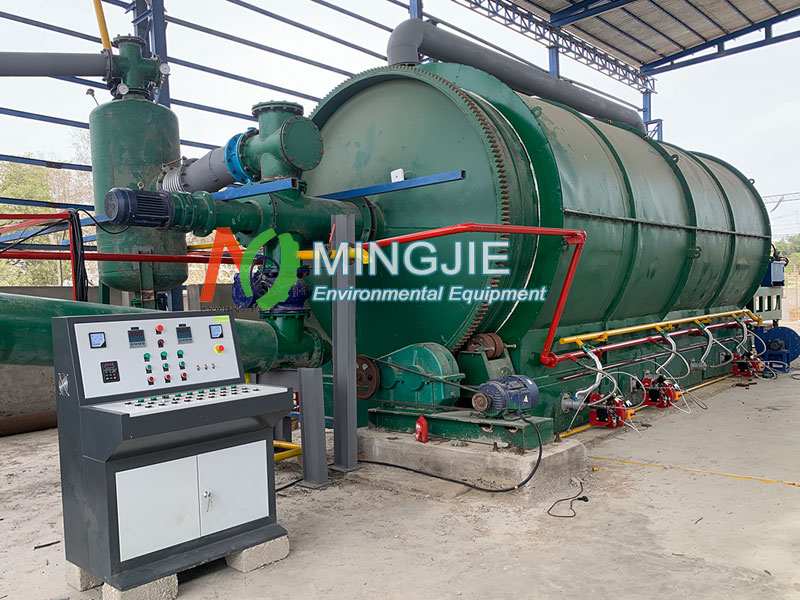
More importantly, the methane produced by pyrolysis is not directly emitted. It is recovered and utilized as energy, converting into CO₂ during combustion. Although CO₂ is also a greenhouse gas, its GWP is only 1/28 that of methane, significantly reducing its climate impact for the same mass.
Taking the treatment of 1T MSW containing 50% organic matter as an example, landfilling produces approximately 100 cubic meters of methane. MSW Pyrolysis produces only 20 cubic meters of methane, all of which is used for energy recovery. It is equivalent to a reduction of approximately 4.3 tons of CO₂ equivalent carbon emissions.
Carbon Substitution Effect of Energy Recovery
Pyrolysis equipment converts carbon resources in solid waste into usable energy products, achieving indirect carbon emission reduction through carbon substitution. Pyrolysis gas can be directly used for boiler combustion heating or for power generation via gas turbines. Pyrolysis oil, after refining, can be used as a diesel substitute in industrial kilns or transportation. Pyrolysis char can be used as fuel or as a soil conditioner (biochar), achieving long-term carbon sequestration.


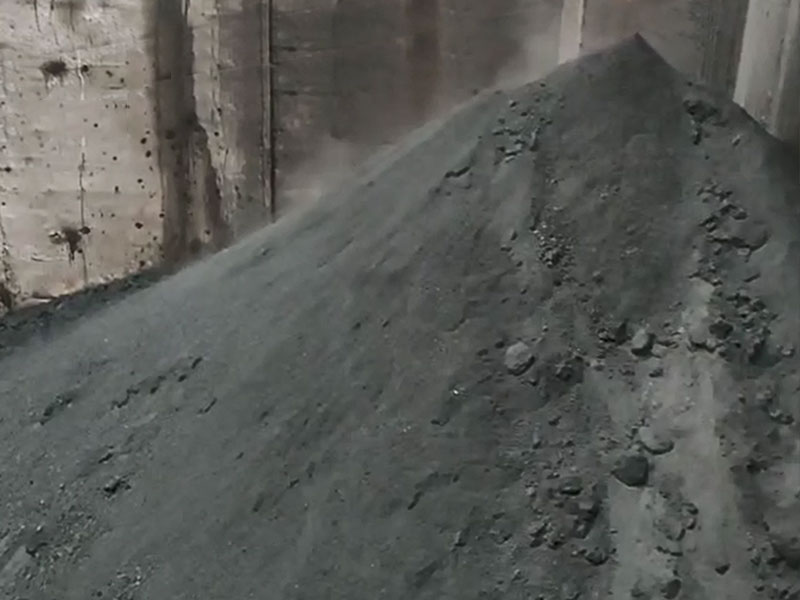
This “waste-for-energy” model essentially replaces “non-renewable carbon” from fossil fuels with “regenerated carbon” from solid waste. Pyrolysis for Solid Waste Treatment reduces carbon emissions during fossil fuel extraction and combustion.
For example, in traditional landfill treatment, plastics take hundreds of years to degrade and release microplastic pollution. Plastic pyrolysis plant can convert waste plastics into pyrolysis oil. One ton of waste plastic can produce pyrolysis oil that can replace 0.7 tons of diesel. Based on a diesel combustion carbon emission coefficient of 2.63 kg CO₂/kg, pyrolysis of each ton of waste plastic can reduce CO₂ emissions by approximately 1.8 tons. It also avoids carbon leakage during plastic degradation.
Solid Waste Volume Reduction and Carbon Sequestration
Pyrolysis for solid waste treatment can also reduce the long-term carbon footprint through significant volume reduction and carbon sequestration.
On the one hand, the volume reduction rate of solid waste treated by pyrolysis can reach 85%-95%. Pyrolysis for Solid Waste Treatment significantly reduces the land area occupied by landfills and alleviates carbon sink losses caused by landfill vegetation destruction.
On the other hand, the pyrolytic char produced by pyrolysis has a stable chemical structure, and the carbon element in it can be sequestered for a long time. If it is applied to the soil as biochar, it can improve soil fertility. But it can achieve “carbon sequestration,” becoming a carbon sink for the ecosystem.
Studies show that each ton of pyrolysis for solid waste treatment can produce approximately 100-200 kg of pyrolytic char. The carbon content is fixed at 60%-80%. If this pyrolytic char is used for agricultural soil improvement, each ton can sequester approximately 80-150 kg of CO₂ equivalent carbon and reduce greenhouse gas emissions (such as N₂O) in the soil.
Driven by both global climate change and dual carbon targets, solid waste treatment has shifted from reduction to decarbonization. Traditional landfill and incineration methods, due to their high carbon emissions, are ill-suited to future development needs. Pyrolysis for Solid Waste Treatment offers a systematic solution for reducing the carbon footprint of solid waste treatment.

